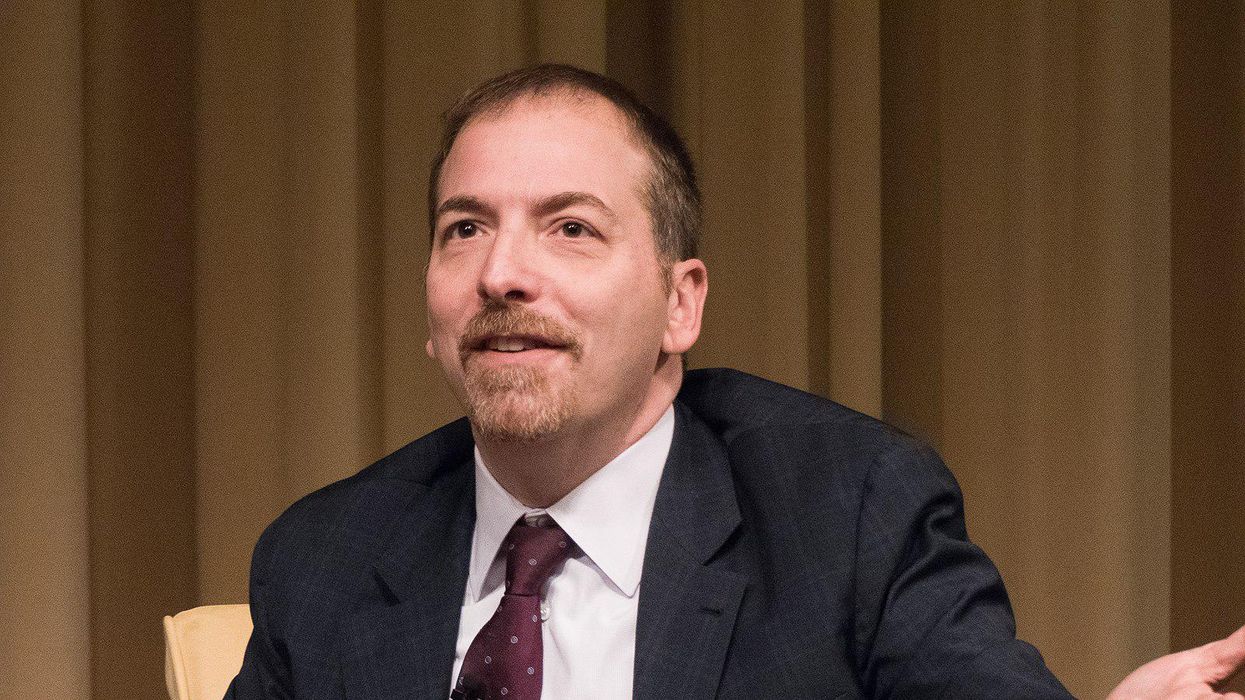Chuck Todd And The Myth Of Liberal Media Bias
Reprinted with permission from Press Run
Surveying the media landscape and seeing a Beltway press corps that's constantly on the run from Republican attacks, Meet The Press moderator Chuck Todd this week urged his colleagues to stand up to the right-wing bullies, who have spent decades demonizing journalists.
"We should have fought back better in the mainstream media. We shouldn't [have] accepted the premise that there was liberal bias. We should have defended," Todd told The Verge. "We ended up in this both-sides trope. We bought into the idea that, 'Oh my God, we're perceived as having a liberal bias.'"
He added: "Where we did get lost in this, and this sort of happened to mainstream media in particular, is that we did let Republican critics get in our heads, right? The Republicans have been running on, "There's a liberal bias in the media." This has been a 45-year campaign."
Technically, it's been a 52-year campaign, with Vice President Spiro Agnew's "nattering nabobs of negativism" attack on the press in 1969 often cited as the launching point of the choreographed crusade.
The good news is that every 12 or 24 months Todd emerges and makes these types of welcomed, clear-eyed pronouncements about the press, calling out right-wing lies, and urging his colleagues to do better in fighting against dishonest GOP attacks.
The bad news is Todd then goes back to work at NBC and rarely follows his own advice. He makes no structural changes to the programs he oversees to make sure they don't fall prey to GOP tactics. It's easy to view his pronouncements as performative, directed at those who are concerned about journalism and about the state of our democracy in the face of a Republican Party that broke its pact with common sense and instead now worships at the altar of a Mar-a-Lago retiree.
Todd refuses to follow his own lead and produce consistently clear, aggressive journalism, while not fretting about potential GOP pushback.
A quick example.
During Trump's second impeachment trial, Todd introduced a Meet The Press segment in which voters from a toss-up district in Michigan were interviewed about the House proceedings. Touted as a way to take the temperature of everyday voters outside of the "Beltway," the sit-down with six voters from Kent County, Michigan, offered a chance to hear if heartland denizens "cared" about impeachment. Except there was a problem: Every voter interviewed was a Republican, and every voter interviewed opposed impeachment. ("I don't even care. It's just noise.")
This makes no sense. If you wanted anecdotal evidence of the nation's response to impeachment, you'd interview a wide cross-section of voters. Instead, Todd only talked to Republicans even though the Michigan district he focused on is evenly split among Democrats and Republicans. What would explain this type of illogical press behavior other than a fear of upsetting conservatives — of being tagged with the Liberal Media Bias charge?
Todd lamented to The Verge that the press has fallen into a "both sides trope," where journalists strain to place blame on Republicans and Democrats even when it should not be distributed that way. Yet earlier this year, after another deadly gun rampage in America, and after the Republican Party once again categorically refused to support any possible gun safety legislation, Todd went on Meet the Press and blamed Congress — Both Sides — for not doing anything to stop the deadly plague.
In response to my media critiques, PRESS RUN readers often ask, why? Why does the press behave the way it does? Why does it engage in Both Sides nonsense in an effort to water down irresponsible GOP behavior? Why does it view so many news cycles through the prism of Republican talking points? Without question, the overriding cultural reason is the fear of being hit with the Liberal Media Bias label.
I don't mean that's what's driving journalists on an hourly, granular level, or that before filing a story or going on the air they consciously think about GOP attacks. But it does remain the dominant ethos and it's been ingrained in newsrooms for decades. (Being the target of right-wing smear campaigns is no fun and it can damage journalism careers.) Consequently, the press spends an inordinate amount of time trying to prove it's not guilty of Liberal Media Bias.
That institutional fear helps explain the inexplicable, like why so many news organizations refused to call Trump a liar for four years, even as they documented his thousands of lies. That was a deliberate decision to turn away from the truth —and from accurate language — while covering the most dangerous president in American history. Afraid that calling Trump a "liar" in straight news reports would spark cries of Liberal Media Bias, the press capitulated. In the process, Trump used his avalanche of untruths to chip away at our democratic institutions.
Eric Alterman wrote an entire, must-read book in 2003 expertly debunking the bias myth, What Liberal Media? Conservatives "know mau-mauing the other side is just a good way to get their own ideas across–or perhaps prevent the other side from getting a fair hearing for theirs," he wrote. I made a similar effort with my book, Lapdogs: How the Press Rolled Over for Bush, where I focused on the media's failure during the run-up to the Iraq War: "To oppose the invasion vocally was to be outside the media mainstream and to invite scorn. Like some nervous Democratic members of Congress right before the war, mainstream media journalists seemed to scramble for political cover so as to not subject themselves to conservative catcalls."
Still, the Liberal Media Bias myth persists and remains a driving engine of the conservative movement. It's arguably more potent today because Trump made it a centerpiece of his political appeal to hate the press. It would be helpful if journalists like Chuck Todd actually took their own advice and combated the fiction head on.












